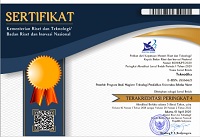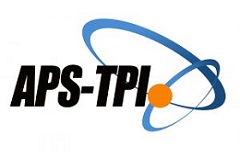Capturing Teacher Readiness for Adapting Playful Virtual Reality in The Learning Process
Abstract
Keywords
References
Abbas, J. R., Younis, N., Johnstone, E., Rajai, A., Isba, R., Payton, A., … Bruce, I. A. (2025). Use of virtual reality to remotely train healthcare professionals in paediatric emergency tracheostomy skills: protocol for a multi-centre, non-inferiority educational interventional study with historical controls. BMC Surgery, 25(1), 25. https://doi.org/10.1186/s12893-024-02736-1
Billett, S., Troth, A., & Yan, H. (2023). Elaborating the Relations Amongst Workers’ Learning, Innovations and Well-Being. Vocations and Learning. https://doi.org/10.1007/s12186-023-09336-9
Braun, V., & Clarke, V. (2006). Using thematic analysis in psychology. Qualitative Research in Psychology, 3(2), 77–101.
Burkhardt, V., Vallette, M., Speck, I., Flayyih, O., Huber, C., Widder, A., … Albrecht, T. (2025). Virtual reality cricothyrotomy - a tool in medical emergency education throughout various disciplines. BMC Medical Education, 25(1), 250. https://doi.org/10.1186/s12909-025-06816-5
Capitani, P., Joil, R., Colonna, C., Schirò, G. R., Legrenzi, S., Prandoni, L., … Giorgi, P. D. (2025). Virtual reality for surgical training in balloon kyphoplasty procedure. European Journal of Orthopaedic Surgery and Traumatology, 35(1). https://doi.org/10.1007/s00590-024-04123-1
Creswell, J. W., & Plano Clark, V. L. (2018). Designing and conducting mixed methods research (3rd ed.). SAGE Publications.
Im, J. E., Gu, J. Y., Bae, J. H., & Lee, J. G. (2025). Development and user experience of a three-dimensional object-based virtual reality-simulation tool for dental radiography training: a randomized controlled trial. BMC Medical Education, 25(1). https://doi.org/10.1186/s12909-024-06623-4
Listiawan, T., Purwanto, P., As’Ari, A. R., & Muksar, M. (2018). Mathematics Teachers Technological Content Knowledge (TCK) in using Dynamic Geometry Software. Journal of Physics: Conference Series, 1114(1). https://doi.org/10.1088/1742-6596/1114/1/012121
Ljungblad, L. W., Murphy, D., & Fonkalsrud, H. E. (2025). A mixed reality for midwifery students: a qualitative study of the technology’s perceived appropriateness in the classroom. BMC Medical Education, 25(1). https://doi.org/10.1186/s12909-025-06919-z
Lopez, M., Arriaga, J. G. C., Nigenda Álvarez, J. P., González, R. T., Elizondo-Leal, J. A., Valdez-García, J. E., & Carrión, B. (2021). Virtual reality vs traditional education: Is there any advantage in human neuroanatomy teaching? Computers and Electrical Engineering, 93(March). https://doi.org/10.1016/j.compeleceng.2021.107282
Neher, A. N., Bühlmann, F., Müller, M., Berendonk, C., Sauter, T. C., & Birrenbach, T. (2025). Virtual reality for assessment in undergraduate nursing and medical education - a systematic review. BMC Medical Education, 25(1), 292. https://doi.org/10.1186/s12909-025-06867-8
Mishra, P., & Koehler, M. J. (2006). Technological pedagogical content knowledge: A framework for teacher knowledge.Teachers College Record, 108(6), 1017–1054.
Patton, M. Q. (2015). Qualitative research & evaluation methods (4th ed.). SAGE Publications.
Plotzker, R. E., Harmon, D. J., Kanellitsas, T., & Klein, B. A. (2025). Virtual reality or personal computer-based gynecologic pelvic exam simulation: medical student preferences. BMC Medical Education, 25(1), 294. https://doi.org/10.1186/s12909-025-06757-z
Prawitasari, B., & Suharto, N. (2020). The Role of Guru Penggerak (Organizer Teacher) in Komunitas Guru Belajar (Teacher Learning Community). 400(Icream 2019), 86–89. https://doi.org/10.2991/assehr.k.200130.145
Sahin, I. (2011). Development of survey of technological pedagogical and content knowledge (TPACK). Turkish Online Journal of Educational Technology, 10(1), 97–105.
Shakirova, N., Al Said, N., & Konyushenko, S. (2020). The Use of Virtual Reality in Geo-Education. International Journal of Emerging Technologies in Learning, 15(20), 59–70. https://doi.org/10.3991/ijet.v15i20.15433
Sugiyarta SL, Ardhi Prabowo, Tsabit A. Ahmad, & Aji Purwinarko M.B. S. (2020). Identifikasi Kemampuan Guru Sebagai Guru Penggerak di Karesidenan Semarang. Jurnal Profesi Keguruan, 6(2), 215–221.
Sukmawati, F., Santosa, E. B., & Rejekiningsih, T. (2023). Design of Virtual Reality Zoos Through Internet of Things (IoT) for Student Learning about Wild Animals. Revue d’Intelligence Artificielle, 37(2), 483–492. https://doi.org/10.18280/ria.370225
Suyamto, J., Masykuri, M., & Sarwanto, S. (2020). Analisis Kemampuan Tpack (Technolgical, Pedagogical, and Content, Knowledge) Guru Biologi Sma Dalam Menyusun Perangkat Pembelajaran Materi Sistem Peredaran Darah. INKUIRI: Jurnal Pendidikan IPA, 9(1), 46. https://doi.org/10.20961/inkuiri.v9i1.41381
Swallow, M. J. C., & Olofson, M. W. (2017). Contextual Understandings in the TPACK Framework. Journal of Research on Technology in Education, 49(3–4), 228–244. https://doi.org/10.1080/15391523.2017.1347537
Tanak, A. (2020). Designing TPACK-Based Course for Preparing Student Teachers to Teach Science with Technological Pedagogical Content Knowledge. Kasetsart Journal of Social Sciences, 41(1), 53–59. https://doi.org/10.1016/j.kjss.2018.07.012
Tømte, C., Enochsson, A. B., Buskqvist, U., & Kårstein, A. (2015). Educating online student teachers to master professional digital competence: The TPACK-framework goes online. Computers and Education, 84, 26–35. https://doi.org/10.1016/j.compedu.2015.01.005
Tondeur, J., Scherer, R., Siddiq, F., & Baran, E. (2017). A comprehensive investigation of TPACK within pre-service teachers: The added value of mixed-methods research. Computers & Education, 112, 1–15.
Vidal-Balea, A., Blanco-Novoa, O., Picallo-Guembe, I., Celaya-Echarri, M., Fraga-Lamas, P., Lopez-Iturri, P., … Fernández-Caramés, T. M. (2020). Analysis, Design and Practical Validation of an Augmented Reality Teaching System Based on Microsoft HoloLens 2 and Edge Computing †. Engineering Proceedings, 2(1). https://doi.org/10.3390/ecsa-7-08210
Refbacks
- There are currently no refbacks.





.png)













